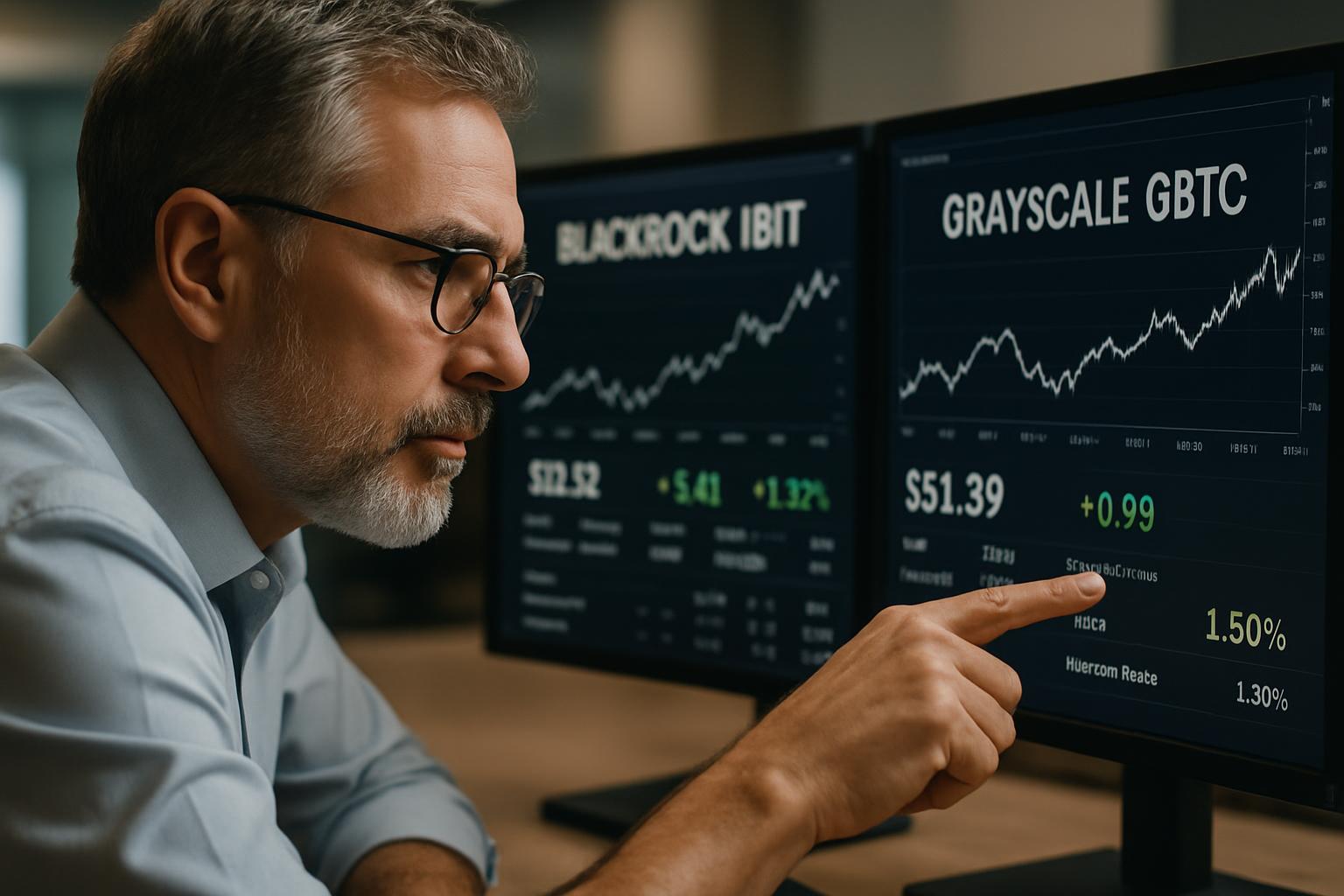How Wisconsin’s $160M Bitcoin Bet Changed Pension Investing?

In the staid world of public pension fund management, revolutions rarely arrive with a bang. They begin as a quiet tremor—a single line item in a quarterly filing that ripples through the institutional ecosystem with seismic force. Such was the case in May 2024, when a routine Form 13F disclosure revealed that the State of Wisconsin Investment Board (SWIB), the asset manager for the Wisconsin Retirement System (WRS), had allocated over $160 million to newly launched spot Bitcoin exchange-traded funds (ETFs).
For the nascent digital asset class, this was more than just another influx of capital. It was a watershed moment. The WRS is not a speculative hedge fund chasing fleeting trends; it is a paragon of fiduciary prudence, a multi-billion-dollar institution renowned for its fiscal discipline and consistently ranking as one of the few fully-funded pension systems in the U.S.. When an institution of this caliber makes a deliberate move into a novel and historically volatile asset class, the market takes notice. This was not a trade; it was a signal. Analysts and institutional consultants immediately recognized the disclosure for what it was: a “green light” for the legions of more cautious, risk-averse pension funds that had been watching from the sidelines, as reported by Wisconsin Public Radio.
The significance of the move was amplified by its timing. For a major state pension fund—a “big fish” in the institutional ocean—to appear in the 13F filings just one quarter after the landmark January 2024 approval of spot Bitcoin ETFs was highly unusual. As noted by Bloomberg Senior ETF Analyst Eric Balchunas, these large, methodical institutions typically wait a year or more for a new product to build liquidity and a track record before committing capital. The swiftness of SWIB’s action underscored a deep level of preparatory due diligence and conviction. It suggested that the board had not only evaluated the asset but had also developed a clear framework for its inclusion in a long-horizon portfolio.
This act of early adoption provided what the market craved most: institutional validation. It effectively provided a due diligence roadmap, demonstrating that a rigorous, fiduciary-compliant case could be made for allocating to Bitcoin.
The decision fundamentally altered the risk calculus for other pension chief investment officers (CIOs) and their boards. In the world of institutional asset management, the fear of being wrong is often secondary to the fear of being wrong alone. Fiduciaries operate under intense public and regulatory scrutiny, where the primary directive is the preservation of capital. An unconventional investment that results in a loss can be a career-ending event. However, when a peer institution with an unimpeachable reputation for prudence makes the first move, it creates a powerful shield of defensible precedent. A CIO considering a similar allocation can now frame their decision not as a radical leap into the unknown, but as a prudent step following the data-driven approach established by one of the nation’s best-run pension systems. The Wisconsin signal was not an endorsement of Bitcoin’s future price; it was a validation of the process of evaluating and allocating to Bitcoin as a responsible fiduciary action. It was, in essence, institutional permission to begin the work.

Anatomy of a Prudent Pioneer: Deconstructing the Wisconsin Retirement System
To fully grasp the magnitude of SWIB’s signal, one must first understand the institution behind it. The Wisconsin Retirement System is not just any public pension plan; it is an outlier in a field often characterized by underfunding and fiscal distress. Its credibility as a bellwether is derived directly from its exceptional financial health, its sophisticated governance, and its long-term, disciplined investment philosophy.
An Institutional Juggernaut
The WRS is a financial titan. As of early 2024, SWIB managed over $162 billion in assets, making it the ninth-largest public pension fund in the United States and the 25th largest in the world. It serves as the financial bedrock for over 692,000 current and former public employees across Wisconsin, from teachers to state and local government workers, as detailed on the SWIB official site. The sheer scale of the fund means its investment decisions carry significant weight, but it is the fund’s quality, not just its quantity, that makes it a market leader.
A Bastion of Fiscal Solvency
The most critical factor underpinning WRS’s reputation is its funding status. In a landscape where many state pension plans are dangerously underfunded, Wisconsin stands apart. This position of profound financial strength is the source of its signaling power. When an underfunded plan takes a risk on a volatile asset, it is often perceived as a desperate “Hail Mary” pass—an attempt to chase high returns to close a cavernous funding gap, a risk highlighted in analyses of legislative pushes for crypto in pensions. Such moves are viewed with skepticism, not emulation. The WRS, by contrast, operates from a position of security. Its investment decisions are therefore seen by institutional consultants and peer boards as purely strategic, alpha-seeking maneuvers designed to enhance an already robust portfolio, not to patch a leaking one.
A Disciplined and Innovative Investment Engine
SWIB’s success is no accident. It is the result of a disciplined, prudent, and innovative investment strategy executed over decades. The effectiveness of this approach is staggering: approximately 85% of the benefits paid to WRS retirees are funded not by contributions from employees or employers, but from SWIB’s investment earnings. This statistic alone speaks volumes about the sophistication and efficacy of its asset management.
Furthermore, the WRS is built on a unique risk-sharing model. Unlike many traditional defined-benefit plans, the WRS ties annuity adjustments for retirees directly to the fund’s investment performance. This structure has been lauded by organizations like The Pew Charitable Trusts as a key reason for the system’s “fiscal discipline and sound policy,” allowing it to maintain full funding and stable costs over the long term. It is this combination of financial strength and sophisticated management that makes the Wisconsin Retirement System the ideal pioneer—a prudent, credible leader whose actions provide a trusted roadmap for others to follow.

The Bitcoin Playbook: A Chronicle of WRS’s ETF Allocations
The story of Wisconsin’s foray into Bitcoin is not one of simple adoption. A meticulous review of its quarterly SEC filings reveals a dynamic, full-cycle strategy of entry, optimization, scaling, and, ultimately, exit. This complete narrative offers a far more valuable and nuanced case study for other institutions than a simple “buy and hold” story. It demonstrates a masterclass in institutional execution and tactical asset management.
Phase 1 (Q1 2024): The Prudent Entry
The first signal emerged in the 13F filing of May 14, 2024, which detailed SWIB’s holdings as of March 31, 2024. The filing showed that in the very first quarter of their existence, SWIB had moved quickly to establish a position in spot Bitcoin ETFs. The initial allocation totaled approximately $164 million, a material sum yet a tiny fraction—roughly 0.1%—of its total assets under management, as covered by Chief Investment Officer magazine.
This initial foray was strategically split between two of the largest new products:
- BlackRock’s iShares Bitcoin Trust (IBIT): ~$99.2 million
- Grayscale Bitcoin Trust (GBTC): ~$63.7 million
This two-pronged approach allowed SWIB to gain immediate, diversified exposure through the two most liquid vehicles on the market, just weeks after the SEC’s landmark approval on January 10, 2024.
Phase 2 (Q2 2024): The Consolidation and Optimization
The next chapter unfolded in the subsequent filing on August 14, 2024. This disclosure revealed a crucial strategic pivot. SWIB had completely sold its position in the Grayscale Bitcoin Trust (GBTC) and had simultaneously increased its holdings in BlackRock’s IBIT.
This was a classic institutional maneuver driven by a ruthless focus on efficiency. At launch, GBTC carried a significantly higher expense ratio of 1.50% compared to IBIT’s 0.25%, which also came with initial fee waivers, a key detail in the structure of these new ETPs. Furthermore, IBIT, backed by the world’s largest asset manager, had rapidly asserted its dominance, becoming the market leader in trading volume and liquidity. SWIB’s decision to consolidate its entire position into the cheaper, more liquid vehicle was a clear demonstration of sophisticated, active management.
Phase 3 (Q4 2024): The Scale-Up
Having established and optimized its position, SWIB then demonstrated its conviction. The 13F filing of February 14, 2025, revealed that the pension fund had nearly doubled down on its bet. The total reported exposure to Bitcoin, now held exclusively in IBIT, had surged to approximately $321 million. This represented a significant increase from the initial foray and signaled a growing confidence in the position as part of its tactical allocation strategy.
Phase 4 (Q1 2025): The Disciplined Exit
The most instructive chapter of the Wisconsin playbook came with the filing of May 15, 2025. Covering the quarter ending March 31, 2025, the disclosure was stark: SWIB had liquidated its entire position, unloading all 6,060,351 shares of IBIT.
This complete exit is as significant, if not more so, than the initial entry. It strongly suggests that the allocation was conceived and executed as a tactical, alpha-generating trade rather than a permanent, strategic holding. Given the substantial price appreciation of Bitcoin from early 2024 through early 2025, SWIB’s move appears to be a textbook example of disciplined risk management. By selling the entire position after a significant run-up, SWIB locked in its gains and removed a highly volatile asset from its books, de-risking the portfolio. This pragmatic approach—identifying an opportunity, building a position, optimizing it, and exiting to realize profit—makes the asset class far more palatable to risk-averse investment committees.
The complete lifecycle of SWIB’s investment is summarized in the table below.
| Reporting Period | Filing Date | ETF Ticker(s) | Value at Quarter-End (USD) | Key Strategic Action |
|---|---|---|---|---|
| Q1 2024 | May 14, 2024 | IBIT, GBTC | ~$164 Million | Initial entry into two leading spot Bitcoin ETFs. |
| Q2 2024 | Aug. 14, 2024 | IBIT | ~$99 Million | Consolidation into IBIT; complete exit from higher-fee GBTC. |
| Q4 2024 | Feb. 14, 2025 | IBIT | ~$321 Million | Significant increase in allocation, scaling into the position. |
| Q1 2025 | May 15, 2025 | None | $0 | Complete liquidation of the entire Bitcoin ETF position. |
This timeline transforms a series of disparate news reports into a coherent case study of active, tactical management. It provides the core evidence that the true lesson from Wisconsin is not just about adoption, but about sophisticated, full-cycle execution.
The Herd Gathers: Tracking the Institutional Ripple Effect
The “Wisconsin Signal” did not echo in a vacuum. As predicted by analysts, SWIB’s move acted as a catalyst, emboldening other institutional players to cross the Rubicon into digital assets. The evidence, drawn from subsequent SEC filings and public announcements, paints a clear picture of an “institutional herd” beginning to stir.
The First Followers
In the months following SWIB’s initial disclosure, a number of other public and private pension funds announced their own allocations.
- The State of Michigan Retirement System: In July 2024, filings revealed that Michigan’s multi-billion-dollar fund had allocated a modest $6.6 million to Bitcoin ETFs, a small but symbolically significant step.
- Jersey City Pension Fund: In a direct nod to Wisconsin’s leadership, Mayor Steven Fulop announced in July 2024 that the city’s pension fund was updating its SEC paperwork to begin investing in Bitcoin ETFs, stating, “The question on whether crypto and bitcoin is here to stay is largely over.”
- UK Pension Scheme: Demonstrating the signal’s international reach, an unnamed UK defined benefit pension scheme, advised by consultancy Cartwright, made a 3% allocation to Bitcoin in 2024, explicitly citing the growing trend of institutional adoption in the U.S. as a factor.
Beyond the pension world, pension consultants, who serve as crucial gatekeepers, also began to move. Global Retirement Partners (GRP), a major consulting firm, disclosed in its filings that it was actively buying a range of U.S. spot Bitcoin ETFs for its clients, signaling a normalization of the asset class within retirement portfolio construction.
The Adoption Gradient
The pattern of these early adopters reveals an “adoption gradient.” The process begins with a highly credible leader like the WRS. Their action initiates a wave of due diligence. The first to act are typically smaller, more agile public funds or private entities.
Meanwhile, the true giants of the industry—the mega-funds and sovereign wealth funds—engage in a more protracted process of “diligence and research conversations,” as confirmed by BlackRock’s Head of Digital Assets. These behemoths, with their complex layers of committee approvals, move more slowly.
This gradient suggests that the institutional wave of capital is not a tidal wave but a steadily rising tide. The quantitative evidence supports this burgeoning trend. A report from K33 Research noted that 937 professional institutions had invested in U.S. Bitcoin ETFs in the first quarter of 2024 alone, a rate of adoption that far outpaced the early days of gold ETFs. A broader 2025 survey conducted by EY found that an overwhelming 86% of institutional investors either already have exposure to digital assets or plan to make an allocation in 2025. The herd is not just stirring; it is beginning to move in a coordinated direction.
The Trillion-Dollar Question: Projecting the Future of Pensions in Digital Assets
The initial forays by institutions like the Wisconsin Retirement System represent the vanguard of a potentially transformative capital shift. Projections of even modest single-digit allocations from the multi-trillion-dollar pension and hedge fund universe point toward a wave of demand that could fundamentally reshape the digital asset landscape.
The 5% Thesis and the Denominator Effect
A widely discussed forecast, articulated by blockchain expert Fiorenzo Manganiello, projects that cryptocurrency ETFs could constitute up to 5% of hedge fund and pension fund portfolios by the end of 2025. The power of this thesis lies in the sheer scale of the denominator. The global pension market is measured in the tens of trillions of dollars. A 1% allocation from this colossal pool would represent hundreds of billions of dollars in new demand.
This forecast is not without quantitative justification. A growing body of research has demonstrated that, historically, adding a small allocation of Bitcoin to a traditional 60/40 portfolio would have significantly improved both cumulative and risk-adjusted returns. These studies, such as Bitwise’s analysis on crypto’s role in institutional portfolios, provide the academic rationale that fiduciaries require to justify such an allocation, framing it not as a speculative gamble but as a prudent act of portfolio optimization.

The Fiduciary Bridge and Lingering Hurdles
The critical piece of infrastructure enabling this entire trend is the spot ETF itself. It functions as a “fiduciary bridge,” allowing conservative capital to cross from the highly regulated world of traditional finance into the digital asset space. Before these products, a pension fund seeking Bitcoin exposure faced a fiduciary nightmare: navigating unregulated exchanges or grappling with the complexities of self-custody, challenges detailed in legal analyses of the new ETFs.
The spot ETF, offered by trusted, heavily regulated asset managers, solves these problems. It wraps the underlying asset in a familiar, liquid, and regulated vehicle. The SEC’s approval in January 2024 did not just launch a new product; it created the essential bridge for institutional capital to flow.
Despite this progress, significant hurdles remain. Private pension plans in the U.S. are governed by the strict fiduciary standards of ERISA. The Department of Labor (DOL), which enforces ERISA, issued a stern warning in 2022 urging fiduciaries to exercise “extreme care” before adding cryptocurrency options, citing concerns about volatility, fraud, and custodial risks.
While the DOL’s stance has since softened in May 2025 to a more “neutral,” facts-and-circumstances approach—rescinding the “extreme care” warning—the underlying risks have not vanished. Fiduciaries still bear the immense responsibility of prudently evaluating the suitability of such investments.
Expert Perspective: Reading the Tea Leaves of the Wisconsin Playbook
To interpret the actions of the Wisconsin Retirement System through the simple lens of “adoption” is to miss the profound strategic lesson being offered. The true “green light” from Wisconsin was not merely a signal to buy Bitcoin, but a comprehensive demonstration of how to manage it actively, tactically, and prudently within the unforgiving framework of fiduciary responsibility.
The WRS did not simply dip its toes in the water; it conducted a full-scale reconnaissance mission and returned with a detailed map for those who will follow. This map, The Wisconsin Playbook, outlines a three-part strategy that will likely become the standard for institutional engagement with digital assets:
- The Prudent Entry: The initial allocation was a masterstroke of calculated risk-taking. At roughly 0.1% of the total fund, the position was large enough to be meaningful yet small enough that even a catastrophic loss would have been immaterial to the overall health of the pension system.
- Active and Ruthless Optimization: The rapid pivot from a dual holding in GBTC and IBIT to a consolidated position solely in IBIT was perhaps the most telling move. It revealed that SWIB’s managers were not passive passengers but active pilots, relentlessly pursuing efficiency and minimizing costs.
- Disciplined, Tactical Risk Management: The final act—the complete liquidation of the $321 million position—is the capstone of the entire strategy. It refutes the simplistic narrative that institutions will become long-term, passive “hodlers.” Instead, it demonstrates a sophisticated, tactical approach. After a significant appreciation, SWIB executed its fiduciary duty to preserve capital and realize gains. They had a plan, they executed it, and they took profits.
Ultimately, the Wisconsin Retirement System did not just open the door for pensions to invest in Bitcoin. It provided a sophisticated, full-cycle case study on how to walk through that door, assess the room, and walk out with a profit. The exit is as instructive as the entry. It signals that the coming wave of institutional capital will approach this asset class with the cool pragmatism of a trader, not the unwavering faith of a believer. Bitcoin will be treated as a tactical component within a broadly diversified portfolio—a tool to be actively managed, not passively worshipped. This is the true bellwether signal that will echo through the halls of institutional investment committees for years to come. The age of institutional crypto is here, and Wisconsin has just written the first chapter of its risk management manual.

